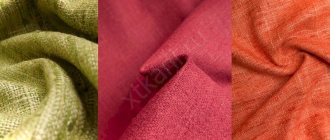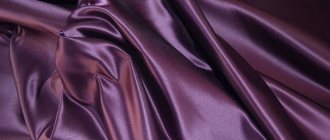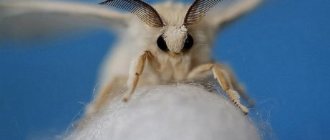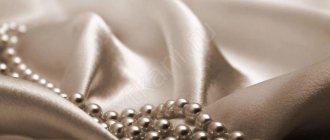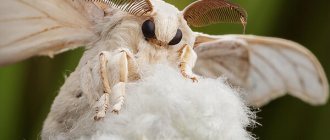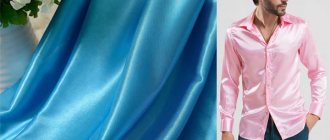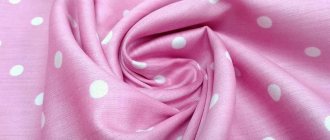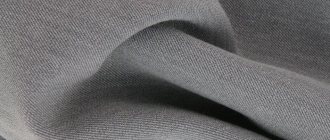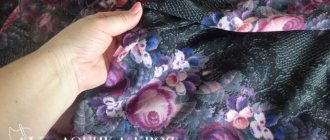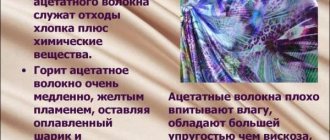Secret behind seven seals
As already mentioned in the first part, the Chinese kept the secret of silk very carefully for several thousand years. Anyone who dared to take silkworms out of China faced execution.
However, despite all the secrecy, the Chinese were destined to lose their monopoly on silk production. Sericulture came to Korea around 200 BC, when a wave of Chinese immigrants arrived. Soon after 300 AD, sericulture spread to the West and to India.
Legend has it that in 440 AD, the prince of Khotan (present-day Hetian), a kingdom on the edge of the Taklamakan Desert, won the hand of the Chinese princesses. And when she left China, she secretly took with her the eggs of the famous silkworm. They say she hid them inside her voluminous hairstyle. However, this was little consolation for silk-hungry Westerners, because Khotan also kept this secret. Why share this with Westerners and kill a good market?
Then, around 550 AD, two Nestorian monks appeared at the court of the Byzantine Emperor Justinian. They hid the silkworm eggs in hollow bamboo poles. Under their supervision, the first imported silkworms hatched from their eggs and wove their cocoons. Byzantium finally began producing silk. The Byzantine church and state created imperial workshops, monopolizing production and keeping secrets to themselves. This allowed the creation of a silk industry in the Middle East, reducing the market for conventional grades of Chinese silk. However, high-quality silk fabrics woven in China specifically for the Middle Eastern market continued to generate high profits in the West, and so trade along the Silk Road continued as before.
Silk: a story of delicate luxury
Around the 5th century, silk was exported from China, and at the same time its production began in several countries around the world. Again, according to legend, one cunning Indian rajah wooed a Chinese princess. And as a dowry he wanted - guess what? And the poor bride brought silkworm larvae and mulberry seeds... right in her high wedding hairstyle. In the Mediterranean countries, the production of silk fabric became widespread around the same time when silkworm eggs (eggs) of the silkworm were first brought to Constantinople from China. The role of pilgrims of good will was played by the monks, who hid the larvae in the hollows of their staffs.
In the Middle Ages, silk became one of the main industries in Venice (XIII century), Genoa and Florence (XIV century), and Milan (XV century). And already in the 18th century, throughout Western Europe they were weaving their own silk with might and main.
So, what kind of miracle is silk?
Silk is a strong, soft thread of neither plant nor animal origin. This thread is produced by the silkworm caterpillar just before pupation.
How does the process of “growing” silk take place?
Silkworm eggs resting on the leaves of a mulberry tree hatch into caterpillars about 2 mm long. They grow quickly, eat constantly, and after 4-5 weeks reach a size of 30 mm. The silkworms are then placed in straw boxes, where they create cocoons. This process takes 8 days, the silkworm transforms into a pupa, and over the next 15 days it turns into a butterfly (more like a moth). This is not allowed, since the butterfly, striving for freedom, spoils the integrity of the silk thread. Therefore, some time before the miracle of transformation, the cocoons are fried in an oven, then treated in a chemical solution or ordinary boiling water so that the adhesive substance that holds the threads together evaporates. This is how the cocoon collapses, breaking up into threads.
The quality of the cocoon thread depends on the type of insect and the leaves of the plant on which it feeds. This is also the reason for the variety of silk fabrics. The silkworm is the most common reproductive insect on Earth. It produces fiber for taffeta, satin, satin, organza, and chiffon. Fabrics with a “coarser” texture—tassar, eri, maga—are made from fibers of “Indian” caterpillars fed on the leaves of oak, castor bean and polyantas trees.
The most noble (and, accordingly, the most expensive) silk is unwound and unboiled, its thread is pulled from the middle of the cocoon.
Silk products are very capricious and demanding in everyday life. They do not like water, especially too warm - they can fade or become moldy, they do not like ironing, as they are difficult to iron and can get stains, silk things are a favorite breakfast of moths...
But tell me, what can compare with the caressing tenderness of silk lingerie, the sophisticated and flowing grace of a silk dress, the intimacy of a scarf and the sexuality of silk blouses?
Silk Road
Silk very early became a precious commodity, in great demand in other countries. It is believed that the silk trade began even before the official opening of the Silk Road. It owes its name to the profitable trade in this material that was carried on throughout its entire length. It was this path that allowed people living in places far from silk cultivation to acquire and use it.
For example, it was found in Egypt, in the village of Deir el-Medina. Female mummies were wrapped in it. The find dates back to 1070 BC. This is probably the earliest evidence of silk trade.
In the 2nd century BC, the Chinese Emperor Han Wu Di sent envoys as far west as Persia and Mesopotamia, and one of the most precious gifts they brought with them was silk. The Han embassy reached Baghdad in 97 AD, and it was there that important finds of Han silks were made. One of the most striking discoveries of Tang Dynasty silks along the Silk Road was made in 1907 by Aurel Stein.
Ancient Rome
No one knows when exactly the ancient Romans first developed silk.
It is known for certain that in the 4th century BC. In Greek and Roman texts, references to Seres, the Kingdom of Silk, began to appear for the first time.
History also knows that back in 53 BC, at the Battle of Carrhae, Roman soldiers were so shocked by the sight of bright silk banners and Parthian troops that they fled in panic. Which indicates that they were probably not familiar with this material.
As a precious commodity, silk imported along the Silk Road eventually became the calling card of the wealthy Romans. According to ancient records, by the 3rd century AD, the Roman emperor Heliogabalus, who reigned from 218-222, wore nothing but silk.
By 380 AD, when the Roman Empire was already divided into Western Rome and Eastern Rome, the Roman soldier and historian Marcellinus Ammianus reported: “The use of silk, which was once limited to the nobility, is now available to all classes without distinction, even the lowest.”
In 408, when the Goth Alaric besieged Rome, his stated price for saving the city included 5,000 pounds of gold, 3,000 pounds of pepper, 30,000 pounds of silver, and 4,000 silk tunics.
History of sericulture in China
Women check the quality of silk.
XII century. Image on silk canvas. By the 5th century BC. e. Sericulture has become one of the most developed areas of Chinese production. The main center for silk production was the city of Hangzhou. At first, only members of the imperial family wore clothes made of precious threads. But over time, high dignitaries and courtiers began to wear silk more and more often.
silk production in ancient China. XIII century
For the inhabitants of ancient China, silk became not just a fabric, but something divine. Mulberry groves, rooms where silk was woven, became truly sacred places. Rituals dedicated to the goddess Tsanshen, the patroness of sericulture, were often held here. According to legends, in ancient times, foreigners kidnapped one person. The prisoner's wife vowed to marry her daughter to someone who would return her husband. A few days later the owner of the house returned, sitting astride his horse. After returning, the horse refused food and water. Then the mistress of the house told her husband about her oath. The owner killed the horse and hung the skin to dry in the yard. When the owner's daughter came out into the yard, the skin suddenly wrapped itself around the girl and carried her through the air. In the end, they landed on a large tree, where the girl immediately turned into a silkworm. Later, the parents saw their daughter flying through the sky and she told them that she had become a goddess. In the provinces where sericulture was developed, Tsanshen was given great honors and sacrifices were made.
Women produce silk threads. XII century.
By the 3rd century BC. e. silk became a kind of currency. They were given salaries, paid taxes and paid for goods. Silk production expanded beyond individual provinces and spread throughout China. Each province began to introduce something new into silk manufacturing technology, so raw materials from different parts of the country had their own characteristics. At this time, silk was distinguished by a variety of textures, colors and rich embroidery. There were a number of the most common subjects and ornaments performed on silk:
- dragons;
- flowers;
- fish and algae;
- phoenixes;
- palaces and scenes from the life of high dignitaries, etc.
Imperial silk robe
Chinese craftswomen did embroidery only in good and clear weather. The art of embroidery required inspiration and a cheerful mood. Mostly plant substances obtained from leaves, bark and roots were used to dye silk.
The scope of use of silk has also expanded. It was used to make fishing line, strings, as a writing material and for weaving bowstrings.
From the 2nd century BC. e. The silk trade began in China. At first, the products were distributed only in neighboring countries - Japan and Korea. But by the 6th century AD. e. In connection with the flourishing of the Great Silk Road, Chinese silk began to reach the countries of the North Caucasus, Central Asia and Europe. Despite widespread exports, the Chinese jealously guarded the secret of silk production. The export of silkworm cocoons outside the country was strictly prohibited under penalty of death. In other countries, attempts have been made more than once to unravel the mystery of silk. The assumptions were the most unexpected. Some argued that silk comes from plant fibers, bird down, or even soil.
The Great Silk Road - silk distribution diagram
But, despite strict prohibitions, already in the 4th century AD. e. sericulture technology becomes known in Japan, and in the 6th century - in Byzantium. The secret of sericulture came to Europe much later - already during the era of the Crusades. However, sericulture has not become widespread in Europe. Cheap cotton was more popular here. And in some countries, entire populations of silkworms have died out due to epidemics. Therefore, in the modern era, China and Japan became the world leaders in silkworm farming.
Silk in our time
The industrial revolution that took place in the leading countries of the world in the 18th-19th centuries significantly influenced silk production in general. Thanks to improvements in technology, the price of cotton textiles has dropped and they have become much more affordable. This led to the fact that expensive silk lost its dominant position. However, new inventions, such as the jacquard loom created for silk embroidery, also contributed to the development of silk production. At the same time, several epizootics (mass epidemics) of the silkworm moth led to the collapse of silk production in Europe. France suffered especially, where the silk industry was never able to recover.
In the 20th century, China and Japan once again became the world's main silk producers, producing more than 50% of the world's output annually. In the late 1970s, China, the country that first developed sericulture thousands of years ago, dramatically increased silk production and is now back at the top of the market. Despite the emergence of nylon and other synthetic fibers replacing natural silk in some areas, global production of natural silk has doubled in the last 30 years!
How is natural silk produced from cocoons?
In the novel “The Twelve Chairs,” O. Bender, while visiting Ellochka Shchukina on a very important matter, displays remarkable knowledge about silk production:
After this, they started talking about silk, and Ostap promised to give the charming hostess several hundred silk cocoons brought to him by the chairman of the Central Election Commission of Uzbekistan.
Everyone knows that the birthplace of silk is China. And we have repeatedly heard about silk cocoons, from which silk thread is extracted. But how many have seen these cocoons with their own eyes and know the technology of silk production? Probably not! For example, I haven't seen it before.
National silk clothing of China Photo: Gennady Leonov, personal archive
Initially, silk products in China appeared from the cocoons of wild silkworms. The unique “technological” process created by nature consists of several stages.
First, the female silkworm, which lives no more than 5 days, lays eggs - up to 500 pieces, from which larvae (mulberry worms) hatch after 2-3 weeks. Growing up, these worms molt four times over the course of a month and finally take on the appearance of a large caterpillar. It is she who has to pupate in order to turn into a large silkworm butterfly in a cocoon. Which needs to dissolve the cocoon with saliva, get out and start the process of its own reproduction in a new way.
In the makeshift museum of the silk blanket factory in Xi'an, silkworm caterpillars at all stages of their life development are on display in flasks - from the larva to the individual beginning to pupate:
Preserved larvae and caterpillars Photo: Gennady Leonov, personal archive
For 6 weeks, the caterpillar intensively feeds on mulberry leaves, and then begins to create a cocoon. It swings on a branch along a complex trajectory and secretes saliva containing future silk from the papilla under the lower jaw, which hardens upon contact with air. Over the course of 2-3 days, the caterpillar spins a thread up to one and a half kilometers long and at the end of spinning it completely encloses itself in the created network - a cocoon.
At the same Xi'an factory, tourists can see what metamorphoses the silkworm caterpillar undergoes inside the cocoon itself:
Cut cocoons at different stages of pupal development Photo: Gennady Leonov, personal archive
And at this stage of the development of the silkworm, man actively intervened in the natural process. Silk breeders do not wait until the silkworm makes a hole in the cocoon with its saliva to get out, and makes it unsuitable for unwinding the thread. The cocoons are boiled, thereby killing the silkworm pupae inside them, and they begin to extract silk thread.
As sericulture developed, wild silkworms became scarce. And silkworm breeders, selecting the largest cocoons, domesticated the silkworm through selective breeding. As a result of selection, the silkworm butterfly has practically lost the ability to fly. Its main function is to lay as many eggs as possible.
The silk thread is very thin, but, nevertheless, it can withstand up to 15 grams of load. This thinnest thread is a kind of lifeline for the larvae, which from their very appearance are able to secrete it. And in cases of danger or an accidental fall, the larva and caterpillar can simply hang on it. And I saw this many times as a child and was always amazed how such a large caterpillar could soar in the air under a trellis with grapes.
Having barbarously killed the inhabitants of the cocoons, the silkworm breeders begin to unwind the silk thread from them. Modern factories do this on special machines:
Machine for unwinding cocoons Photo: Gennady Leonov, personal archive
How does this process begin? Anyone who has encountered the search for the end of a thread hidden between its turns on a spool will understand how difficult it is to find the beginning of the thinnest silk thread in a cocoon, with which to begin the winding process.
In China, the problem was solved very simply: in a winding basin with cocoons floating in water, a special whisk (formerly a wooden stick) is used to create a whirlpool, and the ends of the threads from several cocoons (to twist the main silk thread, threads from at least 5-6 cocoons are needed) cling themselves for the rough surface of the rim. Then the silkworms just have to put them into the machine, and the process begins!
Soviet inventors Yu. N. Alekseev and Kh. T. Abdurakhmanov figured out how to automate this labor-intensive manual operation back in 1988. They proposed installing a pre-pelvis in front of the winding basin, from which water would continuously flow into the winding basin through a small hole. The flow of water would pick up and carry along the threads from the swollen cocoons into the winding basin, where they would be caught and twisted with the main thread entering the drum of the winding device using a special device.
However, apparently, Chinese silkworm breeders are unfamiliar with this innovation or they ignored it, preferring cheap manual labor.
Dirt, which is clearly visible in the winding cans, is an inevitable companion to this production. After all, the cocoon thread consists of 75% of two fibroin threads, and 25% of sericin, wax and fats, which, during the process of soaking the cocoon in water with detergents, settle in the reeling basin:
Dirt in the winding cans Photo: Gennady Leonov, personal archive
In addition, at the end of unwinding the cocoons, their previously welded inhabitants remain in the reeling basin. And this is already organic matter, and even with its constant removal, it leaves a mark on the walls of the winding basin.
Fibroin threads, freed from organic matter, due to their triangular cross-section, give the silk thread that unique shine, for which, among other properties, silk clothing is valued:
National Chinese clothes made of silk Photo: Gennady Leonov, personal archive
On the machine for unwinding thread from cocoons, a bunch of tangled cocoons hangs on the side:
Tangled cocoons Photo: Gennady Leonov, personal archive
Tangled cocoons that are not suitable for producing silk thread are used for other purposes. In particular, for making silk blankets.
Soaked cocoons stretch perfectly, which silkworm breeders willingly demonstrate for tourists:
Stretched silk cocoons at a demonstration stand Photo: Gennady Leonov, personal archive
Silk cocoons can be stretched almost indefinitely, turning them into airy fiber:
Fiber from silk cocoons Photo: Gennady Leonov, personal archive
In addition to the cocoons rejected during unwinding, cocoons are not unwound for the production of blanket filling, but are immediately freed from pupae, washed, stretched and folded into stacks of 25 grams. Next, one stack is stretched to the width and length of the future blanket, the next - to the length and width, etc. Laying layers of stretched silk resembles the structure of plywood: one layer along, the other across
The blanket filling folded in this way looks very much like padding polyester, but has much better qualities. The high-quality silk filling is sewn to the blanket cover on four sides and is not quilted. It does not fall off, does not separate into separate parts and does not wrinkle:
Blanket with silk filling, blanket factory in Xi'an Photo: Gennady Leonov, personal archive
But the stitched silk blankets found on sale are also made from 100% silk, but the quality of which is much worse. It is derived from the cocoons of wild silkworms, the caterpillars of which, unlike the domesticated silkworm, which “eats” only the leaves of the mulberry tree, feed on all the leaves in a row.
This is the modern production of silk and silk products.
Tags: production technology, silkworm, silk
Silk in Rus'
It is believed that sericulture came to Russia only during the reign of the first Russian Tsar from the Romanov dynasty, Mikhail Fedorovich. For the first time, mulberry plantations were developed near Moscow, in the village of Izmailovka, and then in regions of Russia more favorable for sericulture - in Astrakhan and Akhtuba. And by decree of Peter I, similar farms appeared in Kyiv, Constantinograd and on the Terek. With the annexation At the end of the 18th century, when Crimea joined Russia, sericulture spread to the Crimean lands. However, the craft did not become widespread due to the generally unfavorable climate and, as a result, frequent diseases of silkworms.
But not everything is so simple with silk in Rus'.
Some archaeological finds of this material made on the territory of our state turned out to be older than the Silk Road itself. This will be my next article. History of silk - part l Choose a silk scarf Share:
